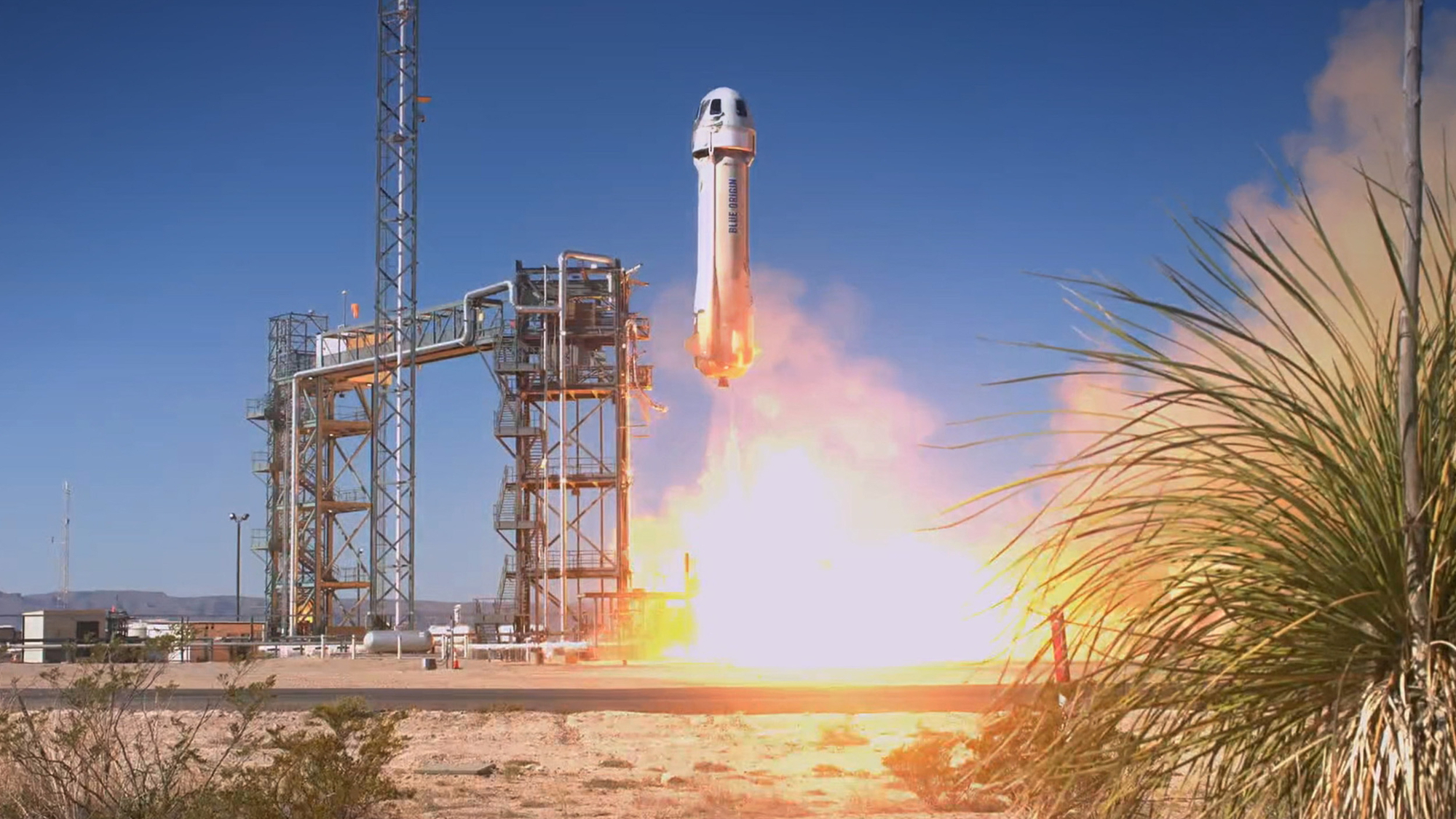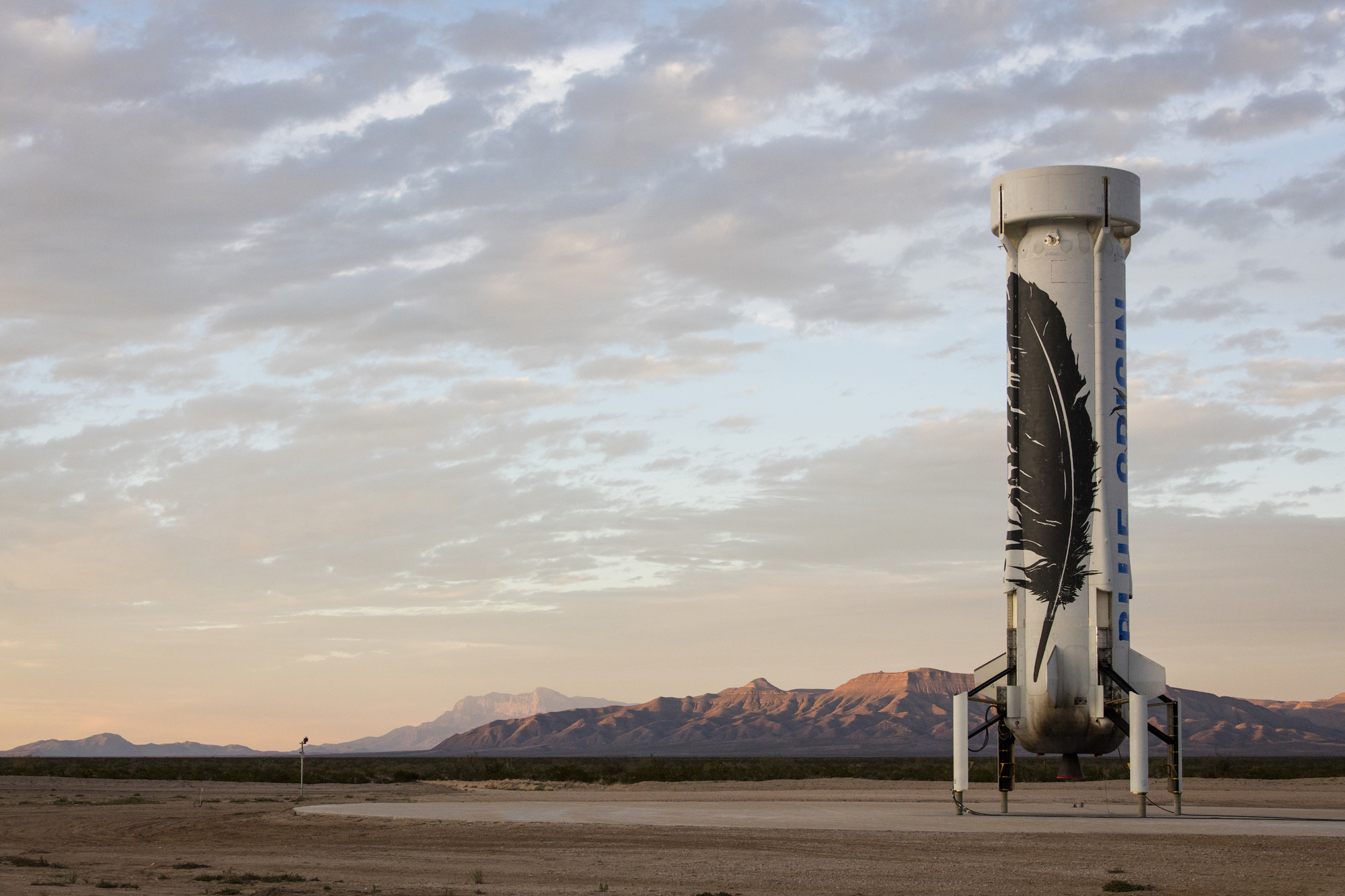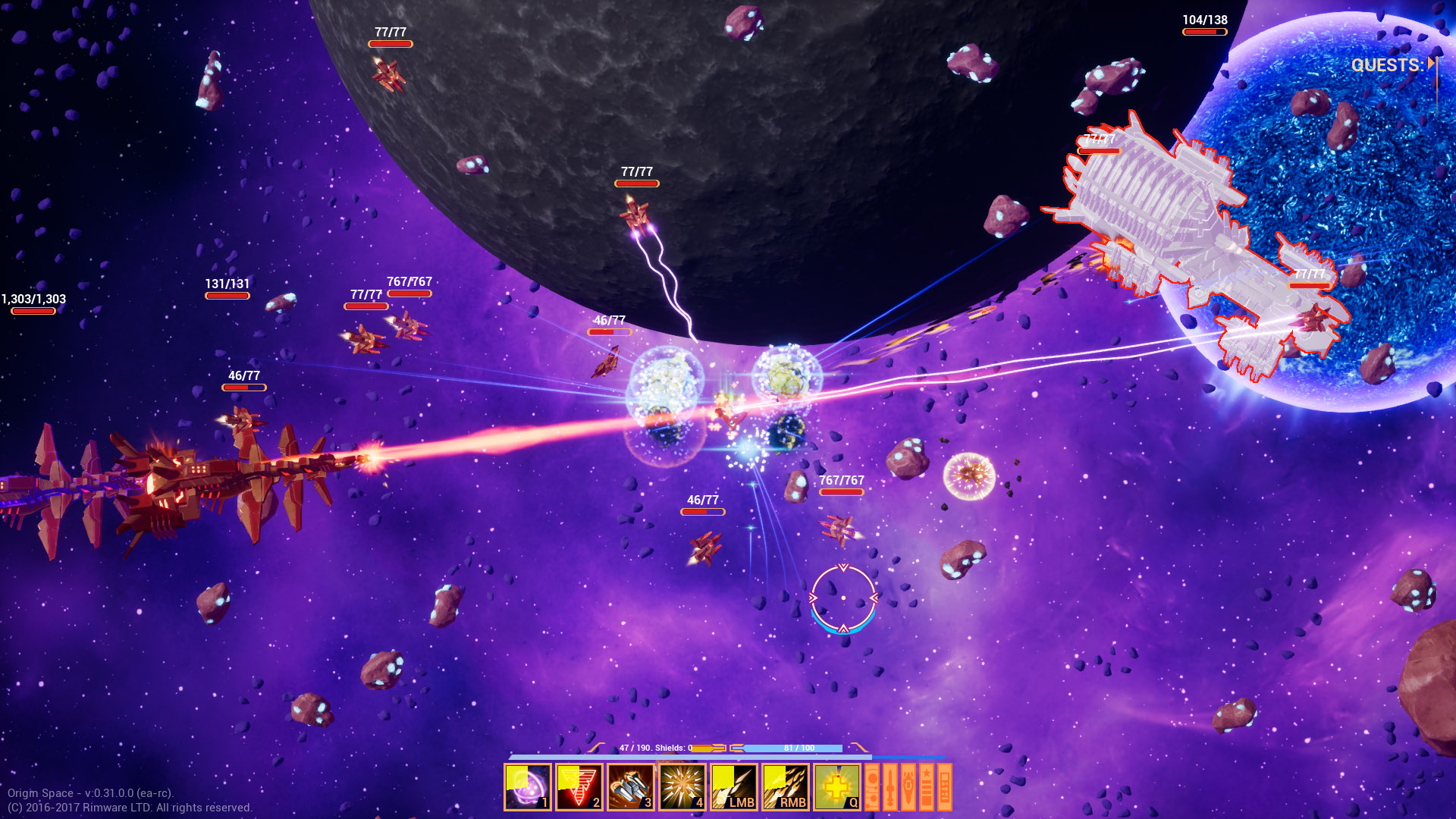Origin Space - Unpacking Cosmic Explorations
Venturing beyond our planet has always been a big part of human dreams, a sort of deep-seated curiosity about what lies out there. From the very first steps into flight to the grand plans for traveling through the stars, the idea of reaching for the cosmos truly captures our collective imagination. There's a real push now, you know, to understand and even make use of what's available in the vast emptiness surrounding Earth, a concept that really brings the idea of "origin space" into sharp focus for many people.
This push isn't just about sending folks up into the blackness for a quick look around; it's also about figuring out how we can sustainably exist, perhaps even thrive, away from our home planet. It involves looking at resources that are out there, thinking about how we might get to them, and what that could mean for life back here on Earth. It’s a pretty exciting time, actually, as different groups and companies work on making these far-off ideas into something we can really touch and feel, or at least, something that feels a whole lot closer.
So, when we talk about "origin space," we're really looking at a collection of efforts and ideas that aim to open up new possibilities for humanity beyond the familiar bounds of our world. It brings together big dreams with some very practical considerations, like how to gather information from faraway places or even how to manage the technical bits and pieces that make these grand plans even possible. It's a broad topic, to be sure, but one that is absolutely central to where we might be headed as a species.
Table of Contents
- What Exactly is Origin Space - A Look at Its Core?
- Blue Origin and the Reach of Origin Space Ventures
- How Does Origin Software Aid Origin Space Data Analysis?
- Other Digital Frontiers Beyond Origin Space Exploration
- What Challenges Face the Quest for Origin Space Resources?
- Who is Shaping the Future of Origin Space Endeavors?
- The Vision for Origin Space Resource Gathering
- A Closer Look at Origin Space Tourism Flights
What Exactly is Origin Space - A Look at Its Core?
When you hear the phrase "origin space," it can mean a few different things, but for many, it points to the idea of a company or an effort focused on what's out there beyond Earth. There's a specific kind of entity that works on being a developer and someone who handles space resources, with the big goal of breaking through the limits of what we have here on our own planet. This is, you know, a pretty ambitious idea, aiming to find and use materials or energy sources that are not tied to Earth's existing supplies.
The whole concept really relies on, you could say, looking past our immediate surroundings and seeing the cosmos as a place where we might find what we need for the future. It's about figuring out how to get to those distant bits of rock or gas, and then, what to do with them once we're there. It’s a bit like, you know, discovering new territories in old times, but on a much, much grander scale, with the added twist of needing very advanced tools and clever thinking to make any of it happen.
So, this particular vision of origin space is all about stretching humanity's reach, making sure we have what we need for generations to come, even if that means looking far, far away from home. It's a pretty exciting prospect, actually, thinking about how we might gather things from asteroids or even the moon to help us here. It’s a field that, well, is just starting to take shape, but it holds a lot of promise for what's next for all of us.
- When Does Rick Come Back In Twd
- Ethan Embry Movies
- 24 Jersey Shore
- Jonas Bros Names
- Kylie Jenner Boobs Fake
Blue Origin and the Reach of Origin Space Ventures
Speaking of space endeavors, there's a well-known company, Blue Origin, that plays a very big part in the general idea of origin space. This company, started by Jeff Bezos, who you might know from Amazon, has been quite active in sending people up into the lower parts of space. They use their New Shepard rocket for these trips, which are a bit like short vacations to the edge of the cosmos, letting people experience what it's like to float around without gravity for a little while, which is, you know, pretty cool.
These flights, lasting only about eleven minutes and going a little over sixty miles up, give passengers a chance to see Earth from a completely different viewpoint and feel that unique sensation of weightlessness. We've seen footage shared by Blue Origin of folks like Katy Perry, Aisha Bowe, Amanda Nguyễn, and others, just kind of, you know, drifting happily inside the capsule. It really shows how accessible these sorts of experiences are becoming for more and more people, which is a big step for origin space.
Beyond these quick trips, Blue Origin is also working on something much bigger: the New Glenn rocket. This particular rocket is designed to be reusable, which is a very important development for making space travel more common and, perhaps, a bit less costly over time. It's only one of a few such rockets out there, joining others like SpaceX's Falcon 9, and its existence truly signals a shift in how we approach getting things, and people, up into orbit for longer periods, which is very much a part of the bigger origin space picture.
How Does Origin Software Aid Origin Space Data Analysis?
Now, shifting gears a little, there's also a powerful piece of computer software called Origin, which, while not directly flying rockets, is actually very important for anyone working with a lot of numbers and measurements, perhaps even data from origin space. This program is, you know, quite good at making detailed pictures from your information and helping you look closely at all sorts of measurements. It's a bit like a very advanced version of a spreadsheet program, but with a much greater ability to make visual representations of what your numbers are telling you.
People often find it pretty straightforward to get started with this software, even though it can do some very complex things. One common thing people do with it is to make their graphs look just right. For instance, the program often starts with a certain style of lettering, like Arial, but many folks prefer something else, perhaps Times New Roman, which is, you know, way down at the bottom of a long list. It can be a bit time-consuming to change it every single time you make a new graph, which is something many users try to streamline for their work, especially if they are making many charts for origin space projects.
There are also some handy ways to adjust the look of the lines on your graphs, like how thick they are or how long the little marks stick out from the main lines. You can, you know, double-click on an axis to bring up a box where you can make these kinds of adjustments, picking whether you want to change the bottom line or the one on the left side. And if you ever see a "Speed Mode is on" message on your graph, which can be a bit of a nuisance, there are ways to make that disappear without needing any extra tools, just by going into the program's settings and turning that option off, which is a relief for anyone presenting data from origin space.
Another really useful feature of this Origin software is how it lets you create graphs with two vertical scales, which is pretty handy when you have different kinds of measurements that you want to show together on one picture. For example, you might have one set of numbers showing one thing, and another set showing something completely different, but you want them all on the same graph to compare them easily. You just, you know, put your information into the program, and it helps you set up these kinds of complex visual displays, which is very helpful for understanding varied data sets, like those you might get from origin space observations.
And if you're worried about your beautiful graphs becoming uneditable once you've made them, there's a simple way to copy them into other programs, like presentation software, where you can still make changes to them. This means you can, you know, get your initial picture just right in Origin, and then bring it into a slide show and still tweak little bits without having to start over. It’s a very practical solution for sharing and refining your visual information, especially when you're presenting findings related to origin space or any other scientific field.
Other Digital Frontiers Beyond Origin Space Exploration
It's worth mentioning that the word "Origin" also pops up in other areas, not just in the context of space or scientific software. For example, there's the Origin application for computer games, which is, you know, a completely different kind of platform. Recently, many people who use this gaming application have been finding themselves in a bit of a situation where the system has been pushing them to install another program, the EA app, with a pop-up that you just can't get rid of. This has been a bit frustrating for many users, as it sort of forces a change they might not have wanted.
What happens then is that this new EA app automatically takes away the old Origin gaming program from your computer. And if, for some reason, you decide you don't want the EA app either and uninstall it, well, you're left without either of them. It's a bit of a cycle, really. Sometimes, too, people have had issues with this gaming platform misreading how much free storage space they have on their computers, which is, you know, quite a puzzle. Some folks have even said that trying to do things over and over again, like restarting or reinstalling, sometimes helps, but it’s not always a clear fix for these kinds of digital hiccups.
So, while these digital platforms are very much about different kinds of "origins" compared to the vastness of origin space or the precision of data analysis software, they do show how a single word can have many different meanings depending on the context. It just goes to show that, you know, language can be a bit tricky sometimes, with words taking on new lives in various fields, whether it's about exploring the cosmos or simply playing a video game on your computer.
What Challenges Face the Quest for Origin Space Resources?
The idea of using resources from origin space, like those mentioned by the company focused on breaking through Earth's limitations, comes with its own set of puzzles to solve. It's not just about getting there; it's about, you know, figuring out how to actually collect and use materials that are incredibly far away and in an environment that is very different from anything we're used to. Think about it: everything from the extreme cold to the lack of air, and the simple fact that a trip to an asteroid or the moon takes a good long while.
Then there's the question of what to do with these resources once you have them. Do you bring them back to Earth, which would be, you know, a very expensive and difficult process? Or do you try to use them out there, building structures or fuel depots in space? Each choice brings its own unique set of problems to work through, from developing the right kind of tools that can operate in such harsh conditions to making sure that any extraction methods are, you know, safe and won't cause unintended issues in the cosmic environment. It's a truly complex endeavor, trying to make these origin space dreams a practical reality.
Furthermore, the whole concept of owning or managing resources that are not on Earth is, in some respects, a new area for rules and agreements. There aren't really clear guidelines for who gets what, or how things should be done when it comes to, say, mining an asteroid. So, beyond the technical and engineering difficulties, there's also the big task of setting up the right frameworks and understandings between countries and companies to make sure that the pursuit of origin space resources happens in a way that benefits everyone, or at least, doesn't cause new problems.
Who is Shaping the Future of Origin Space Endeavors?
A few key people and organizations are truly making waves in the world of origin space. Jeff Bezos, for instance, is certainly a central figure, having founded Blue Origin. His vision for making space travel more common and, you know, building a future where humanity lives and works in space, is a driving force behind many of the efforts we see today. It’s pretty clear that his involvement has given a big push to the idea of private companies taking on roles that used to be only for government agencies.
Beyond the founders and leaders, the people who actually go into the cosmos are also shaping the story of origin space. We've seen various crews take flight on Blue Origin's New Shepard, including individuals like Aisha Bowe, Amanda Nguyễn, Kerianne Flynn, Gayle King, and Lauren Sánchez. These folks are, you know, making history with each trip, showing what's possible and inspiring others to look up. Wally Funk, too, at 82 years old, became the oldest person to fly into space on a Blue Origin mission, which was, you know, a truly remarkable achievement.
Even individuals like Katy Perry and her crewmates, who were part of a New Shepard flight, contribute to the public's awareness and interest in origin space. Calandrelli, too, shared her aspirations on social media when it was announced she would be part of a crew, calling it her "dream." These personal stories and experiences are very important because they help to make the vastness of origin space feel a little more personal and achievable for everyone else, showing that it's not just for, you know, a select few, but something that more and more people might one day experience.
The Vision for Origin Space Resource Gathering
The core idea behind the company known as Origin Space, the one described as a developer and operator of space resources, is pretty straightforward: it's about finding ways to get what we need from beyond Earth's surface. This vision is, you know, driven by the belief that our planet's resources have limits, and that to continue growing and thriving as a species, we need to look elsewhere for materials and energy. It's a forward-thinking approach, to be sure, aiming to secure a future where humanity isn't held back by what's available here at home.
This means, in a way, thinking about asteroids not just as pretty lights in the night sky, but as potential sources of valuable metals or water. It means considering the Moon as a possible place to set up bases that could, you know, provide fuel for longer trips into the cosmos, or even serve as a staging ground for deeper explorations. The whole point is to break free from the idea that everything we need has to come from our home planet, and instead, see the wider cosmos as a place full of possibilities for human use.
So, the vision for origin space resource gathering is very much about sustainability on a cosmic scale. It's about, you know, creating new supply chains that stretch far beyond Earth's atmosphere, and developing the technology and methods to make that happen safely and effectively. It’s a pretty ambitious goal, but one that could, perhaps, change the course of human civilization in some very big ways, offering new avenues for progress and development that are not bound by terrestrial constraints.
A Closer Look at Origin Space Tourism Flights
When we talk about origin space, especially in the context of people actually going up there, the idea of space tourism comes up quite a bit. Blue Origin has been at the forefront of this, sending several groups of passengers on short trips beyond Earth's atmosphere. These flights are, you know, a big step towards making the experience of leaving our planet something that more than just trained astronauts can do. It's about opening up the cosmic frontier to anyone who, perhaps, has the means and the desire to see it for themselves.
We've heard about the tenth space tourism mission, and then the ninth, both launched by Blue Origin, carrying different groups of people into the suborbital region. These missions are, you know, relatively quick, usually lasting around eleven minutes, but in that short time, passengers get to see the curvature of Earth and feel what it's like to be truly weightless. It's a completely different perspective, giving them a firsthand look at the vastness that is origin space, and how small
- Alligator Encounter Billy Horschel Golf Tournament
- Monsters Cast Menendez Brothers
- How Old Is Wayne Newton
- Who Is Blue Ivys Mother
- Cely Vazquez And Johnny Middlebrooks

Jeff Bezos' Blue Origin unveils crew for 10th space tourism launch | Space

Photos: Glimpses of Secretive Blue Origin's Private Spaceships | Space

Origin Space on Steam